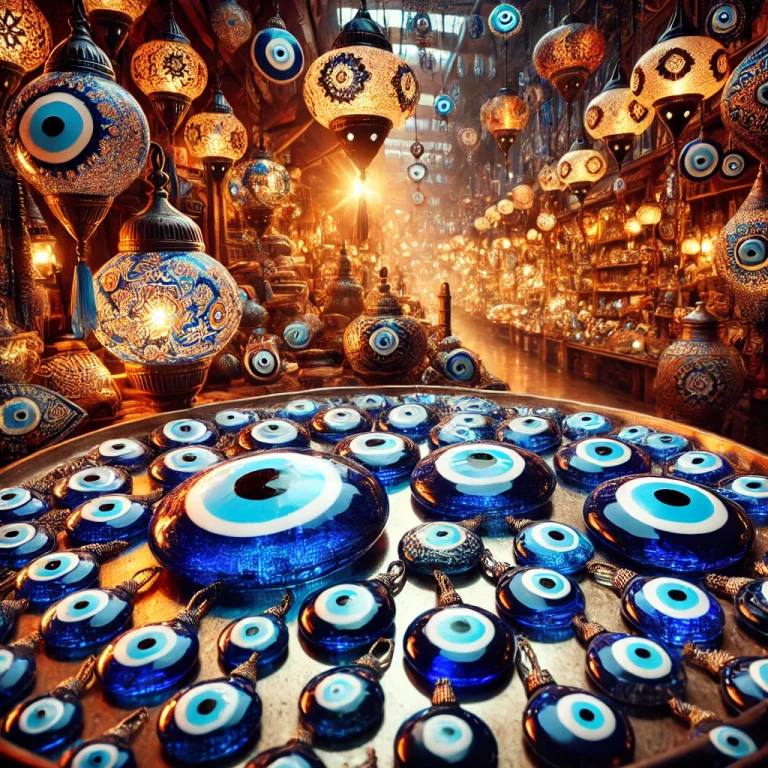The evil eye, or “nazar boncuğu,” is one of the most iconic symbols in Turkish culture. It is believed to protect against negative energy and jealousy, and it can be found everywhere in Turkey—from homes to jewelry, and even in cars and offices. But where did this belief originate, and why does it hold such significance in Turkish society? In this blog, we will delve into the history, meaning, and various uses of the evil eye in Turkish culture.
The Origins of the Evil Eye Belief
The concept of the evil eye dates back thousands of years, with roots in ancient Mesopotamian, Greek, and Roman civilizations. The belief is that envious or malevolent glances can bring misfortune or harm to others. To counteract this, cultures across the world, including Turkey, adopted protective symbols and rituals.
The Significance of the Nazar Boncuğu
In Turkish culture, the blue and white glass bead known as the “nazar boncuğu” is the most common representation of the evil eye. It is thought to absorb negative energy and prevent harm. The deep blue color, associated with the sky and water, is believed to have a calming effect and offer protection.
Where You Can Find the Evil Eye in Turkey
The evil eye is present in many aspects of daily life in Turkey, including:
- Jewelry: Bracelets, necklaces, and earrings with the evil eye are worn for personal protection.
- Homes and Offices: Hanging an evil eye amulet at the entrance is a common practice to ward off negativity.
- Vehicles: Many drivers place a small evil eye bead in their cars to ensure safe travels.
- Newborns and Gifts: Babies are often given evil eye charms to protect them from bad luck, and it is a popular gift among friends and family.
Rituals and Beliefs Surrounding the Evil Eye
- Breaking of the Evil Eye: If an evil eye amulet breaks, it is believed to have absorbed a large amount of negative energy and should be replaced immediately.
- Spitting Rituals: Some people in Turkey symbolically spit or say “Maşallah” (meaning “God has willed it”) after giving a compliment to avoid unintentionally casting the evil eye.
- Use in Folk Medicine: In rural areas, special prayers and rituals are performed to remove the effects of the evil eye from individuals who feel affected.
The evil eye is more than just a decorative symbol; it represents deep-rooted beliefs and traditions that have been passed down for centuries. Whether you believe in its power or simply appreciate its cultural significance, the nazar boncuğu remains an integral part of Turkish life, connecting the past with the present.

